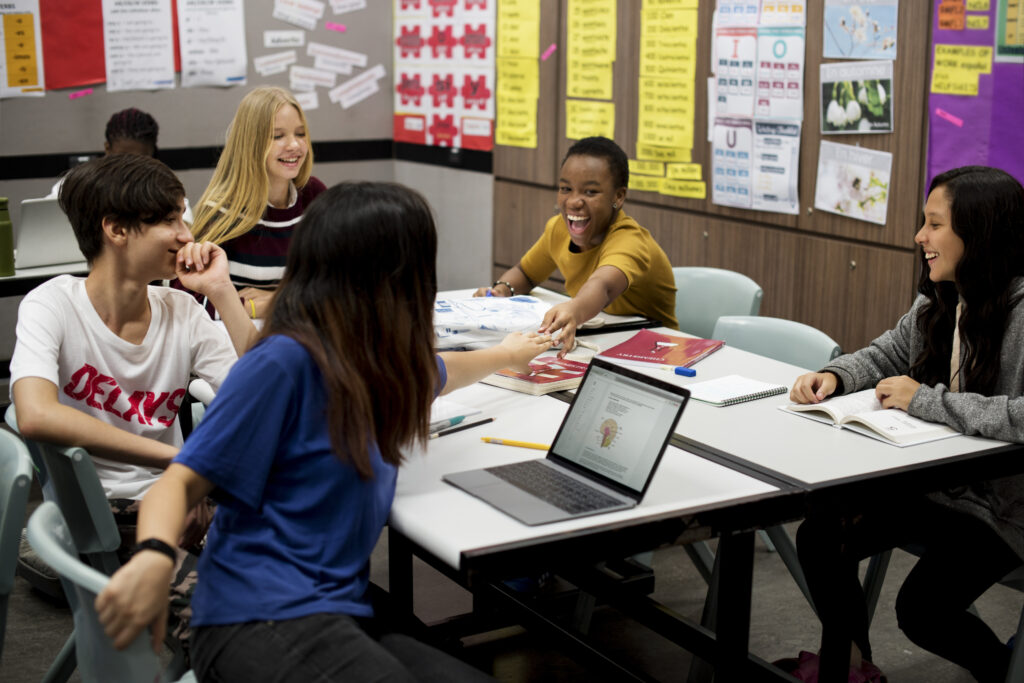
Instructional rounds: The key to better collaborative planning
Collaborative planning time (i.e., PLCs) is a key component of professional learning. Done well, collaborative planning sessions provide time for teachers to come together and prepare what’s next in their classrooms, discuss challenges, brainstorm solutions, and learn new techniques essential to ensuring students receive high-quality instruction. All too often, however, sessions don’t meet these purposes.
In my experience working with schools and systems across the country, I often see collaborative planning time repurposed for general announcements or compliance activities that—may be necessary—but don’t actually engage teachers in lesson planning or robust conversations/learning experiences that strengthen their instruction. Moreover, time dedicated to lesson preparation is frequently only a high-level walkthrough of whatever the next lesson is. These surface-level overviews may help familiarize teachers with the material, but they almost never get specific about how to implement the lesson to address the real needs of real students.
What are instructional rounds?
A key move that I’ve found effective in both 1) keeping collaborative planning sessions focused on the specific strategies that students would benefit from and 2) providing leaders with real-time information that they can use to meet teachers’ needs and build their capacity is instructional rounds.
Instructional rounds^ is a practice in which members of a school community observe and debrief classroom instruction together in order to:
- norm and calibrate on a shared vision and criteria for instructional practices;
- focus on strengthening the knowledge and skills of individual observers to facilitate effective ongoing feedback cycles;
- communicate overall strengths and areas of growth around schoolwide practices; and
- determine next steps for improving instructional practices as a school.
Used effectively, instructional rounds are a useful part of an effective professional learning system, because they help leaders make better use of collaborative planning time. With the help of a content-specific observation tool like an Instructional Practice Guide (IPG), leaders can complete instructional rounds in which they deliberately narrow their focus to the most important aspects of instruction, identify what’s going well, and pinpoint where there’s room for improvement. Then, in the next collaborative planning session, they can leverage that information to share strategies for a bite-sized change that helps teachers deepen the instructional experience for students.
^ Our approach to instructional rounds is based on the work of City et al. (2009) see here for more: City, Elizabeth A., Richard F. Elmore, Sarah E. Fiarman, and Lee Teitel. Instructional Rounds in Education: A Network Approach to Improving Teaching and Learning. Cambridge, MA: Harvard Education Press, 2009.
Example: Using instructional rounds to improve materials implementation
Here’s an example of how instructional rounds can work:
It’s year one of implementing a new set of K–2 reading materials. The school leadership team, recognizing that collaborative planning is the primary vehicle for teachers to internalize the new materials, has worked hard to protect collaborative planning time for internalization. So far, sessions feel like they’ve been going well, but leaders need to see if the work is translating to instructional change. So, leaders conduct instructional rounds using the foundational skills IPG to evaluate whether recent collaborative planning sessions are leading to observable changes in classrooms. As they observe, they notice that teachers are not quite attending to lessons as intended. Some are making additions to their lesson that are more distracting than enhancing; others are omitting key aspects of the lesson that students need to receive. (Both are common in year 1 of materials implementation!) Leaders catch these unadvisable adjustments in their ratings for indicator 1B on the IPG: The lesson from the systematic, explicit program is enacted with integrity.
Once they see the trend popping up across a school (or even a specific grade level), leaders dedicate the next collaborative planning session to strategic planning around indicator 1B. Educators have the opportunity to discuss what enhances the focus of the lesson and what detracts from it—they really center their planning on improvement for this one indicator.
During the next cycle of instructional rounds, leaders observe classrooms with indicator 1b in mind specifically. If they see improvement, they can have some confidence their collaborative planning was effective! If not, they know that teachers need a different strategy and/or more time to work on their skills in this area and can devote time in the next collaborative planning session to indicator 1b.
Creating this reciprocal relationship between collaborative planning and instructional rounds not only provides valuable insights into teachers’ practice, it also makes observations feel more collaborative and less evaluative, which can really improve trust between leaders and teachers.
Instructional rounds and student assessment data
Additionally, instructional rounds also provide valuable information about student engagement and content mastery that can help educators better understand and act on assessment data.
Assessment data give educators a pretty good idea of how students are responding to instruction, but they don’t explain “why” students are responding in that way. Another way leaders can use instructional rounds is to observe classrooms with a given assessment trend in mind. For example, if they find that students haven’t mastered a particular skill, leaders can use an observational tool to ask key questions that can help them identify the underlying cause. Are students not engaged in the content? If they’re not, is it because of the lesson itself? Is it because of the facilitation of the lesson? Is it because they need an additional scaffold to be able to access that instruction? Instructional rounds can help leaders pinpoint areas that need improvement and address those strategically.
In my experience, one of the things that make instructional rounds so effective is that they help leaders provide clear, actionable guidance for teachers, which, in turn, allows teachers to make a bite-sized change to their instructional approach that feels digestible. That kind of easily understandable, actionable feedback enables teachers to change their practice immediately. It also lets teachers know what leaders will be looking for during their next observation, creating clearer expectations for teachers, which is always appreciated. And, it gives leaders the efficiency of changing practice not just with one teacher, but with an entire grade level or even school, depending on how your collaborative planning system is structured.
Professional learning time is finite and valuable. In my experience, getting the most out of it requires making direct connections to what is going on in classrooms in real-time—and instructional rounds are a great way to do just that.
Ready to add instructional rounds to your professional learning routines?
Download this free resource for more practical guidance and tools.


